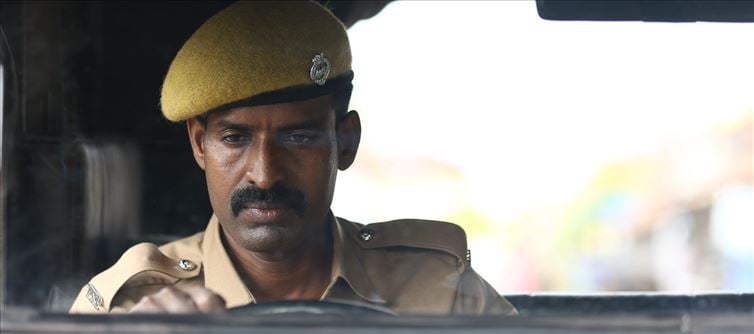The first segment of Viduthalai is set in 1987 and is loosely based on a Jeyamohan short tale. It is essentially a tale of the loser. vijay sethupathi is the star of the show (although he only makes a brief showing here; in Part 2, he will play a larger role), but this story is focused on the development of the Kumaresan character played by Soori. Vetrimaaran's biggest achievement is recognizing qualities in soori that no one else has during the actor's roughly 25-year career. Vetrimaaran notices the actor's ability to portray goodness, innocence, impotence, lack of confidence, desperation, and internal moral code in addition to his helplessness and helplessness. By internalizing the director's writing and giving a completely convincing performance, soori rewards Vetrimaaran's instincts. He doesn't seem to be "acting" very often. He simply is. Because we are initially outsiders in this society, his Kumaresan serves as our eyes and ears.The first part of Viduthalai operates on a pretty basic good-versus-bad level. The police, a specialized task squad formed to apprehend the leaders of a rebel group known as Makkal Padai, are the "bad guys." These people are excellent. Because of the harm that the government's development initiatives bring to the local population and ecosystem, they turn to violent means of protest. The members of Makkal Padai are either Naxalites, rebels, or terrorists, depending on who is speaking. Take note of the character played by vijay sethupathi who is the group's boss. Its name, Perumal, signifies "God." Nobody has ever seen him, but he is in control of everything and is present everywhere. It's a good moniker.How does a stranger turn into a friend? How does a child learn wisdom? How does one learn to distinguish the truth from media and government-disseminated propaganda? In other words, how can you tell who the actual "good guys" and "bad guys" are? And lastly, how does a man who initially fears a gun wind up possessing one? Specifically, how does a "coward" turn into a "hero"? These are the concerns that underpin Viduthalai, and they inform its design. The central theme of the story about coming of age is Kumaresan. His voice-over letters to his mother provide insight into his mental condition, and nearly everyone in his immediate environment—both good and evil, pure and corrupt—becomes a teacher, or "Vaathiyar."Even Kumaresan's romantic interest, Paapa (Bhavani Sre's character), teaches him a valuable lesson: You should trust people for who they are on the inside, not for the clothes or uniforms they don on the outside. I wished the remainder of the love track had been written in the same way after listening to Kumaresan's wonderful realization. Paapa and Kumaresan meet wonderfully. It's unintentional. It demonstrates the degree to which this world is cruel to both animals and (subsequently) people. However, the remaining aspects of this love story, which are supported by two unnecessary ilayaraja songs, don't go as far.The proceedings are further softened by Ilayaraja's music, which emphasizes and sentimentalizes each feeling. For instance, during the scene of that train accident, the music is constantly competing for focus with the background noise (which includes both dialogue and "atmosphere"). These sentimentalized tunes can be used to improve an Aadukalam or a Vada Chennai. The Visaranai/Viduthalai zone is distinct, though, and I find it strange when our filmmakers claim they don't add much of a score to their films before submitting them to festivals, but they do so when releasing them locally "for the sake of the audience."
However, this "mainstreaming" might be what allows Viduthalai to connect with more
people than Visaranai did. I wished we had spent a lot more time inside Kumaresan's head because this is mainly his coming-of-age story. But then, all of Part 1 is a build-up to Part 2, and in the version I viewed a few days before release, the epilogue is a firecracker in every moment and every line. One more intriguing tidbit about Viduthalai. The only two-part movies we have seen in
india (or possibly the entire globe) up until this point have all been in the fantasy/history genre. It's possible that this is the first time a sociopolitical film has been released in two parts.






















